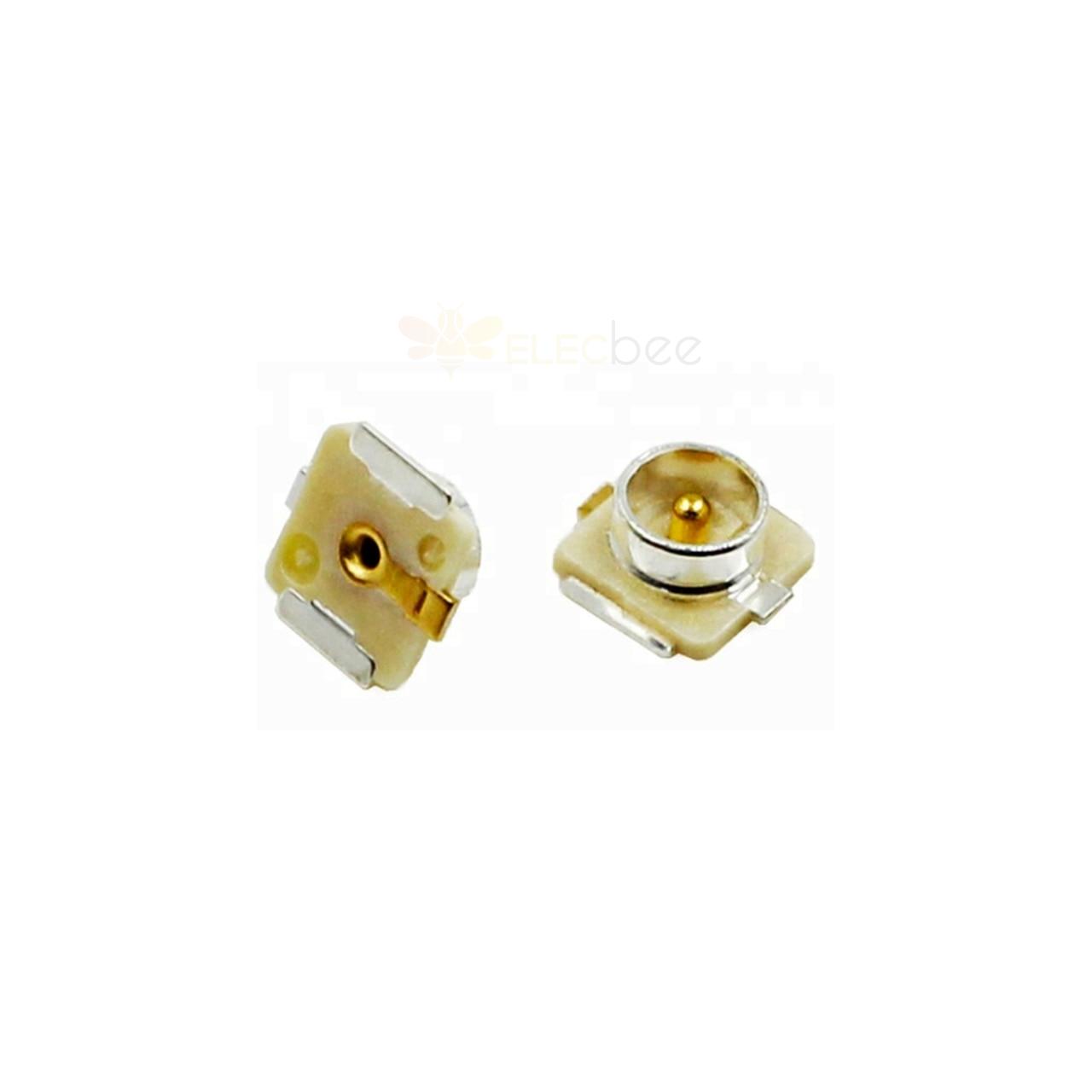Haben Sie sich schon einmal gefragt, ob I-PEX- und UFL-Anschlüsse dasselbe sind? Du bist nicht allein! In diesem Artikel tauchen wir in die Welt der Miniatur einHF-Anschlüsse, mit besonderem Schwerpunkt auf I-PEX- und UFL-Anschlüssen. Am Ende dieser Lektüre werden Sie diese kleinen Wunder besser verstehen und wissen, ob sie austauschbar sind.
I-PEX-Anschlüsse: Ein kurzer Überblick
Was zum Teufel ist ein I-PEX-Anschluss?
I-PEX-Anschlüsse, kurz für I-PEX Co., Ltd., sind winzige Hochfrequenz-Steckverbinder (RF), die von der japanischen Firma Dai-ichi Seiko entwickelt wurden. Sie sind für ihre hohe Leistung und Zuverlässigkeit bekannt und haben sich zur ersten Wahl für verschiedene Anwendungen entwickelt, beispielsweise für drahtlose Kommunikationsgeräte, GPS-Systeme und IoT-Geräte.
Wie arbeiten Sie?
Bei I-PEX-Anschlüssen werden Miniaturkoaxialkabel an Leiterplatten (PCBs) befestigt, was eine effiziente Signalübertragung ermöglicht. Darüber hinaus ermöglicht ihre winzige Größe eine größere Designflexibilität, sodass sie perfekt für kompakte Geräte geeignet sind.
UFL-Steckverbinder: Das Geheimnis lüften
Eine kurze Einführung in UFL-Steckverbinder
UFL-Anschlüsse, auch bekannt als Ultra-Miniatur-Koaxial-Steckverbinder (UMCC), wurden von Hirose Electric, einem anderen japanischen Unternehmen, entwickelt. Diese winzigen Steckverbinder werden hauptsächlich zur Übertragung von HF-Signalen in Anwendungen mit begrenztem Platzangebot verwendet. Aufgrund ihres flachen Designs und ihrer beeindruckenden elektrischen Leistung sind sie zu einer beliebten Wahl für Antennen in drahtlosen Kommunikationsgeräten wie WLAN-Routern und Bluetooth-Modulen geworden.

Das Wesentliche an UFL-Steckverbindern
UFL-Steckverbinder nutzen einen Schnappkupplungsmechanismus, der eine sichere und zuverlässige Verbindung gewährleistet. Ihre geringe Größe und die geringe Einsteckkraft machen sie zu einer großartigen Option für Anwendungen, bei denen mehrere Verbindungen und Trennungen erforderlich sind. Darüber hinaus sind sie für Frequenzen bis zu 6 GHz ausgelegt und eignen sich daher für eine Vielzahl von Hochfrequenzanwendungen.
I-PEX vs. UFL: Ein direkter Vergleich
Nachdem wir uns nun mit den Grundlagen vertraut gemacht haben, gehen wir ins Detail und vergleichen I-PEX- und UFL-Anschlüsse direkt miteinander.
Ähnlichkeiten: Birds of a Feather?
Kompaktes Design
Sowohl I-PEX- als auch UFL-Steckverbinder sind unglaublich kompakt und unauffällig konzipiert. Dadurch eignen sie sich perfekt für Anwendungen mit begrenztem Platzangebot und ermöglichen eine erhöhte Designflexibilität.
Hochleistung
Wenn es um Leistung geht, sind I-PEX- und UFL-Steckverbinder keine Kompromisse. Sie sind in der Lage, hochfrequente Signale zu verarbeiten und liefern eine zuverlässige Signalübertragung, wodurch sie für ein breites Anwendungsspektrum geeignet sind.
Unterschiede: Äpfel und Orangen?
Trotz ihrer Ähnlichkeiten sind I-PEX- und UFL-Anschlüsse nicht dasselbe. Werfen wir einen Blick auf einige wichtige Unterschiede zwischen ihnen.
Herkunft und Branding
Wie bereits erwähnt, werden I-PEX-Steckverbinder von Dai-ichi Seiko entwickelt, während UFL-Steckverbinder von Hirose Electric stammen. Dieser Unterschied in der Herkunft und dem Branding stellt für die meisten Benutzer möglicherweise kein Problem dar, bedeutet jedoch, dass sie standardmäßig nicht austauschbar sind.
Kopplungsmechanismus
Ein weiterer bemerkenswerter Unterschied ist der Kopplungsmechanismus. I-PEX-Anschlüsse verwenden einen einzigartigen „Haken- und Nut“-Mechanismus, um die Verbindung zu sichern, während UFL-Anschlüsse auf einem Schnappsystem basieren. Aufgrund dieser Designunterschiede sind sie nicht direkt miteinander kompatibel.
Kompatibilität mit anderen Anschlüssen
Schließlich sind I-PEX- und UFL-Steckverbinder nicht universell mit anderen Miniatur-HF-Steckverbindern kompatibel. Beispielsweise sind I-PEX-Steckverbinder mit der MHF-Serie kompatibel, während UFL-Steckverbinder mit W.FL, GSC und anderen verwandten Steckverbindern funktionieren. Diese Unterscheidung muss bei der Auswahl von Steckverbindern für bestimmte Anwendungen unbedingt berücksichtigt werden.
Das Urteil: Sind I-PEX und UFL dasselbe?
Zusammenfassend lässt sich sagen, dass I-PEX- und UFL-Anschlüsse zwar viele Gemeinsamkeiten aufweisen, aber nicht dasselbe sind. Sie unterscheiden sich in Herkunft, Marke, Kopplungsmechanismen und Kompatibilität mit anderen Steckverbindern. Wenn Sie also nach einem bestimmten Steckverbinder suchen, prüfen Sie unbedingt die Kompatibilität und Anforderungen Ihrer Anwendung, um Probleme zu vermeiden.
Allerdings bieten sowohl I-PEX- als auch UFL-Steckverbinder eine hervorragende Leistung und ein kompaktes Design, was sie zu idealen Kandidaten für eine Vielzahl von Anwendungen macht. Ganz gleich, ob Sie sich für I-PEX oder UFL entscheiden, Sie können sicher sein, dass Sie sich für eine hochwertige und zuverlässige Lösung entscheiden.






